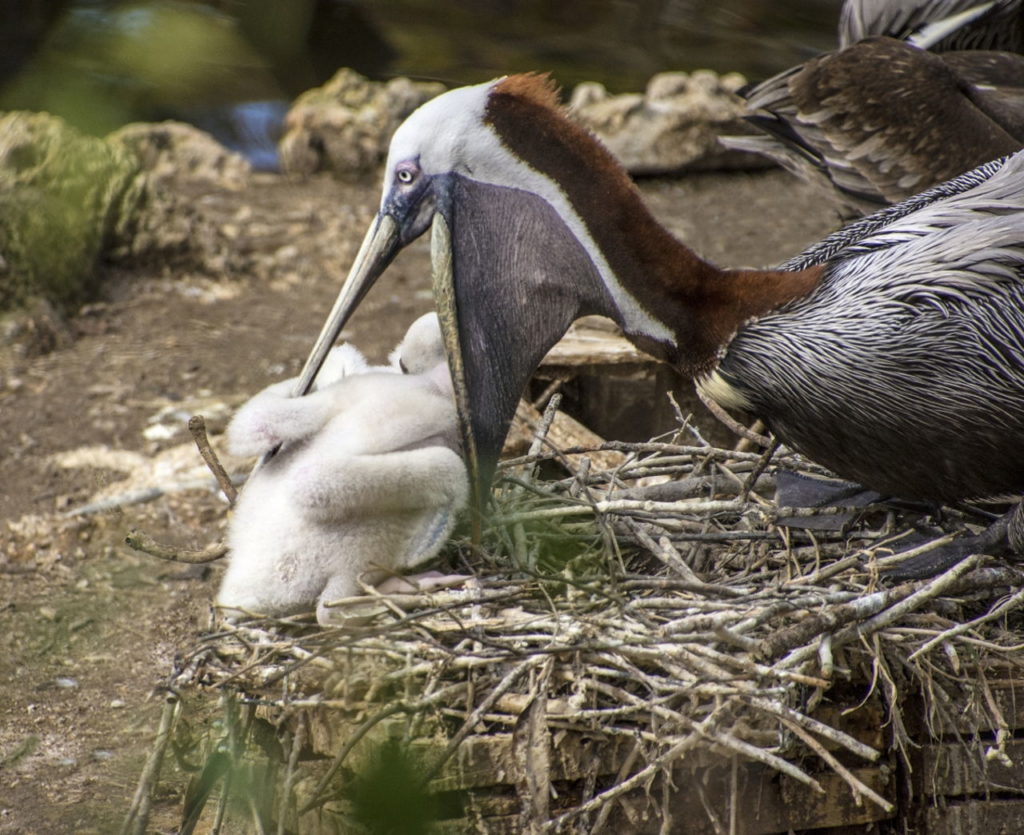by Doug Becker
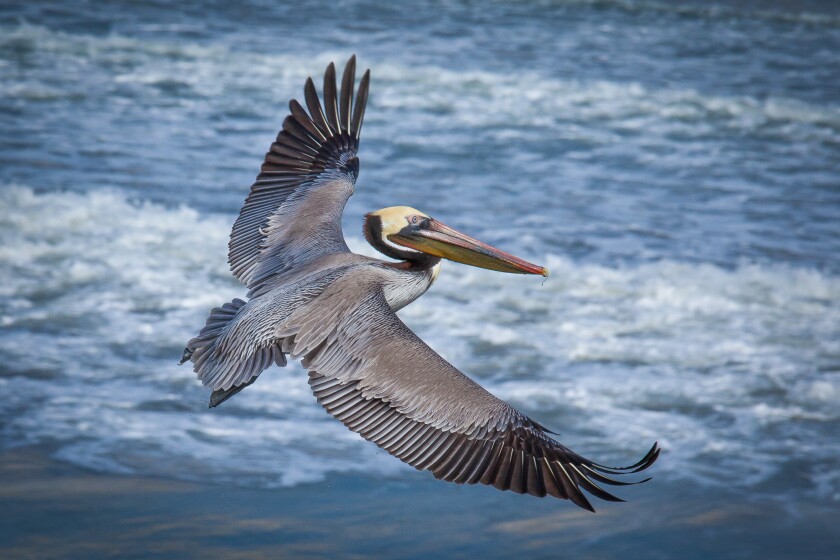
I’ve lived on Florida Intracoastal Gulf waters for many years. We have hawks, Bald Eagles, and tons of Osprey. There are egrets, gulls, herons, and sometimes, a stork walking on the seawall just outside our door. They’re all busy fighting for food and watching me with my fishing pole on the dock. Best of all, however, are the big Brown Pelicans that gather around me in hopes of a free fish treat. They’re quiet, don’t fight with each other, and are patient as they walk around the dock, or paddle around in the water waiting for that treat. The Brown Pelicans are the Gentlemen of the Seabirds, and a pleasure to go fishing with.
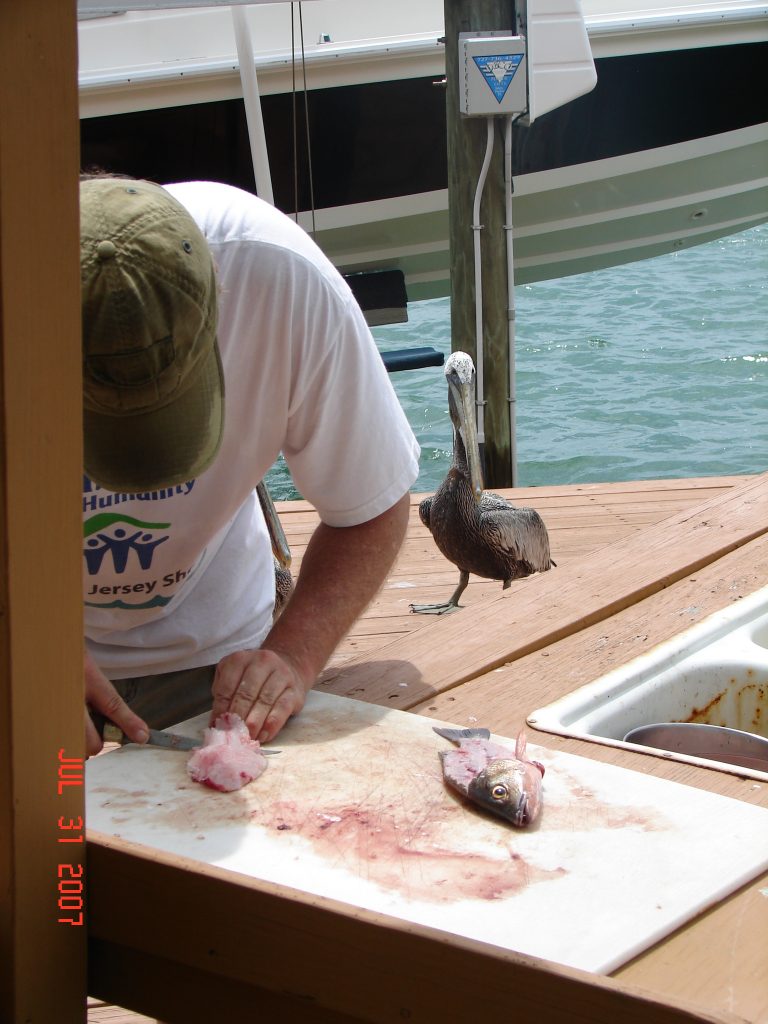

Brown Pelicans are huge and heavy-bodied seabirds. They have a long and narrow neck, a distinctive face and head, and an oversized bill with a large stretchy pouch used for catching fish. Their body is brown, and in breeding season, the Atlantic Brown Pelican’s head is light-yellow with a dark greenish-black pouch under the bill. On western shores, the Pacific Brown Pelican, which is slightly larger than the Atlantic Brown Pelican, has a red pouch during breeding season. In general, the Brown Pelican’s length is 39-54 inches. Their weight varies, but can be up to 11 pounds, with their wingspan reaching 6.5 feet.


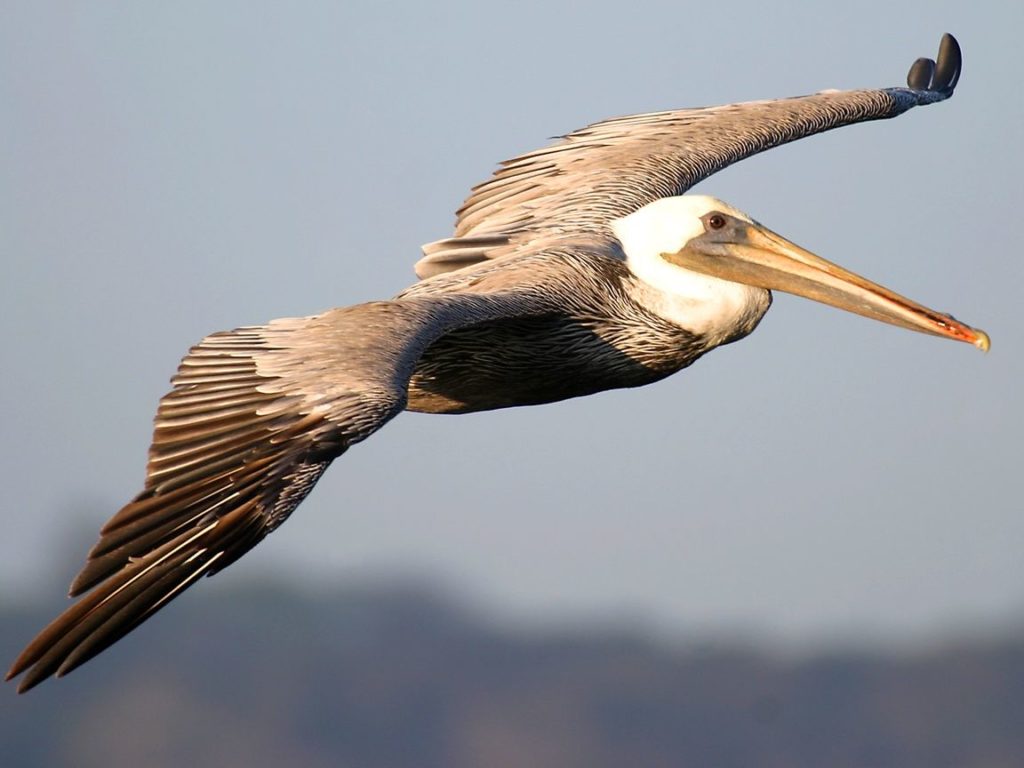
Territories of these remarkable seabirds are along the shores of the southeastern United States, all of the Gulf shores, and down the southwestern shores of California and Mexico. Today, their territory has expanded to the far northwestern states during the warm months. These pelicans don’t shy from people, though they will keep their distance unless there is fishing, commercial or otherwise, going on. A commercial boat unloading their catch may have a hundred pelicans looking for an easy feed. Anyone fishing off a seawall will probably have several pelicans waiting their turn.

I think we’ve all grown up with comical and playful images of pelicans. Fact is, they are among the most elegant and graceful seabirds on the shore. Groups of Brown Pelicans flying lazily along the coast in their familiar “V” shaped formation is called a pod, and is always a pleasure to see. More dramatic is watching them dive for fish. Pelicans “aerial dive” for fish prey. They fly up to 65 feet above the ocean before making a straight head-first dive into the water where schools of small fish are near the surface. As they dive, they tuck and twist to the left to protect their trachea and esophagus from the impact. They also have air pockets in their body that they inflate just before impact. Their plunge makes a huge splash that can be seen from a distance. This sudden impact stuns the small fish. The pelican fills his pouch with as much as two and a half gallons of fish-filled water. He then drains the water from his pouch and keeps the fish. Gentlemen that the Brown Pelicans are, they tolerate gulls and terns that will stand on their head in hopes of stealing a fish while the pelican drains his pouch. These spectacular aerial dives are usually just off the shore as pelicans stay within about 30 miles from land. Numbers of Brown Pelicans feed together this way in unison. It’s like watching bombs falling from the sky! Other times, Brown Pelicans will glide effortlessly in small pods only inches above the water to find prey. So cool to see, especially at sunset.
Brown Pelicans nest in colonies. The male selects the nesting place either on the ground, or in an exposed tree top. He then perches and performs a head-swaying display to attract a mate. This can take a while, but seems to always work. Ground sites vary from simple depressions lined with grass, to large structures of sticks, grass, and seaweed. In a tree top, the nest is more of a platform type, well-built with sticks, grass, and leaves. The female builds the nest in 7-10 days as the male supplies the right-sized materials. The outside of the nest can measure 30 inches across, and 9 inches tall. The interior can be 12 inches across, and 4 inches deep. Ok, time for a brood.

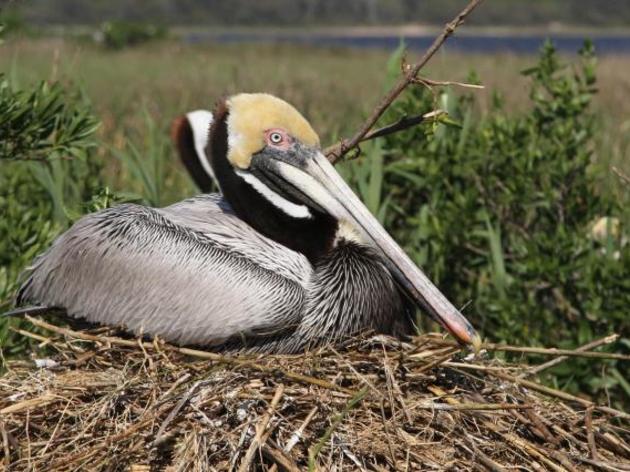

Remember, Brown Pelicans are big birds as you look at these nesting facts. They brood once per year with a clutch of 2-4 eggs. These eggs can be as big as 3.4 inches in length, and 1.4 inches in width. Think about chicken eggs! Incubation period is 29-31 days, and nesting time is 77-84 days before the young leave the nest. It’s interesting to note that pelicans incubate their eggs by practically standing on them using the skin of their large webbed feet to keep their eggs warm. It’s estimated that an average of 30% of a clutch won’t make it.


During the mid-1950s and early-1960s, The Brown Pelican was looking at near extinction caused by pesticides poisoning fish, loss of habitat, and human interference. DDT caused their eggshells to be so thin that the parents’ weight would crush the thin-shells. Thanks to new conservation laws, their declining numbers began to stabilize. Between 1966 and 2015, Brown Pelicans have rebounded to the extent that the North American Bird Breeding Survey shows numbers that take them from the Endangered list to the Species of Moderate Concern list. Not only are their numbers growing, but their territories are taking them further north in the warm summer months.
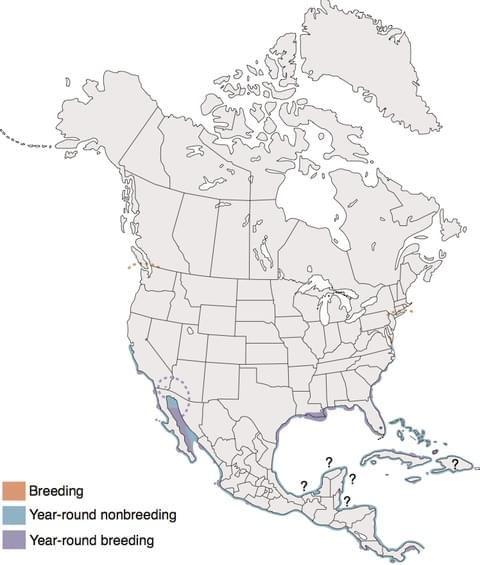
Yes, Brown Pelican numbers are back, but not all is well. They still struggle with human caused threats. They live, breed, and forage near shipping lanes and are constantly threatened by oil spills. Loss of nesting habitat from human development continues. Believe it or not, there is still some hunting and egg collecting even though Brown Pelicans are protected by the Migratory Treaty Act. And, it’s estimated that in Florida alone, some 700 pelicans die each year from fishing line entanglement. I’ve saved a few of these birds myself as it’s not uncommon to have a disabled pelican with monofilament line wrapped around a wing be within arm’s reach for a quick grab. Getting these guys free is very rewarding.
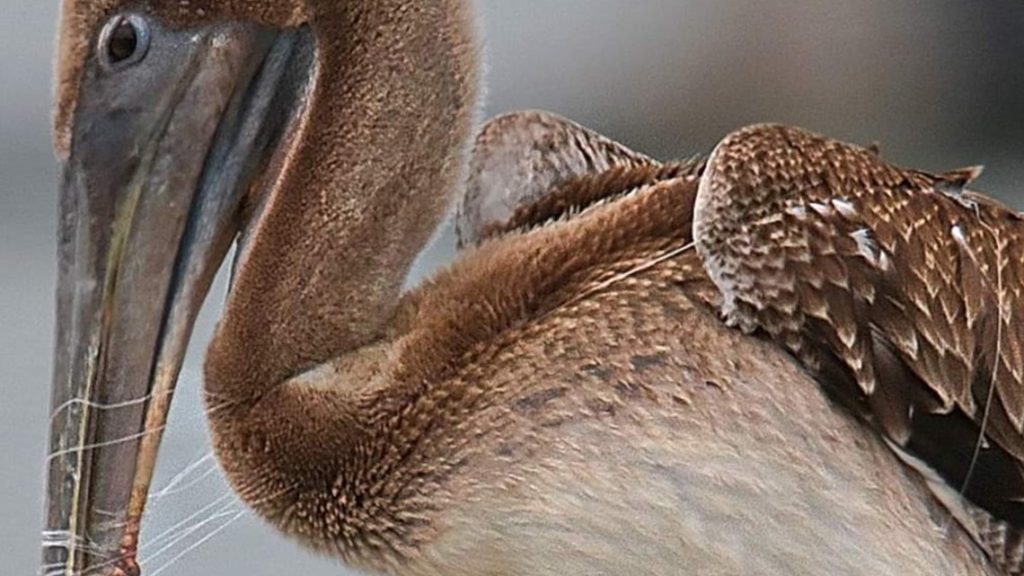
Wanna have some birding fun? Pack up your scope and field glasses and head for the coast where pelican-rich opportunity awaits. Most of all, bring your best camera. Brown Pelicans are the Gentlemen of the Shores. They’re perched on pilings, walking around boardwalks and marinas, and just waiting to have their picture taken. You can’t fail. Bring the whole family. I’ll see ya out there!


